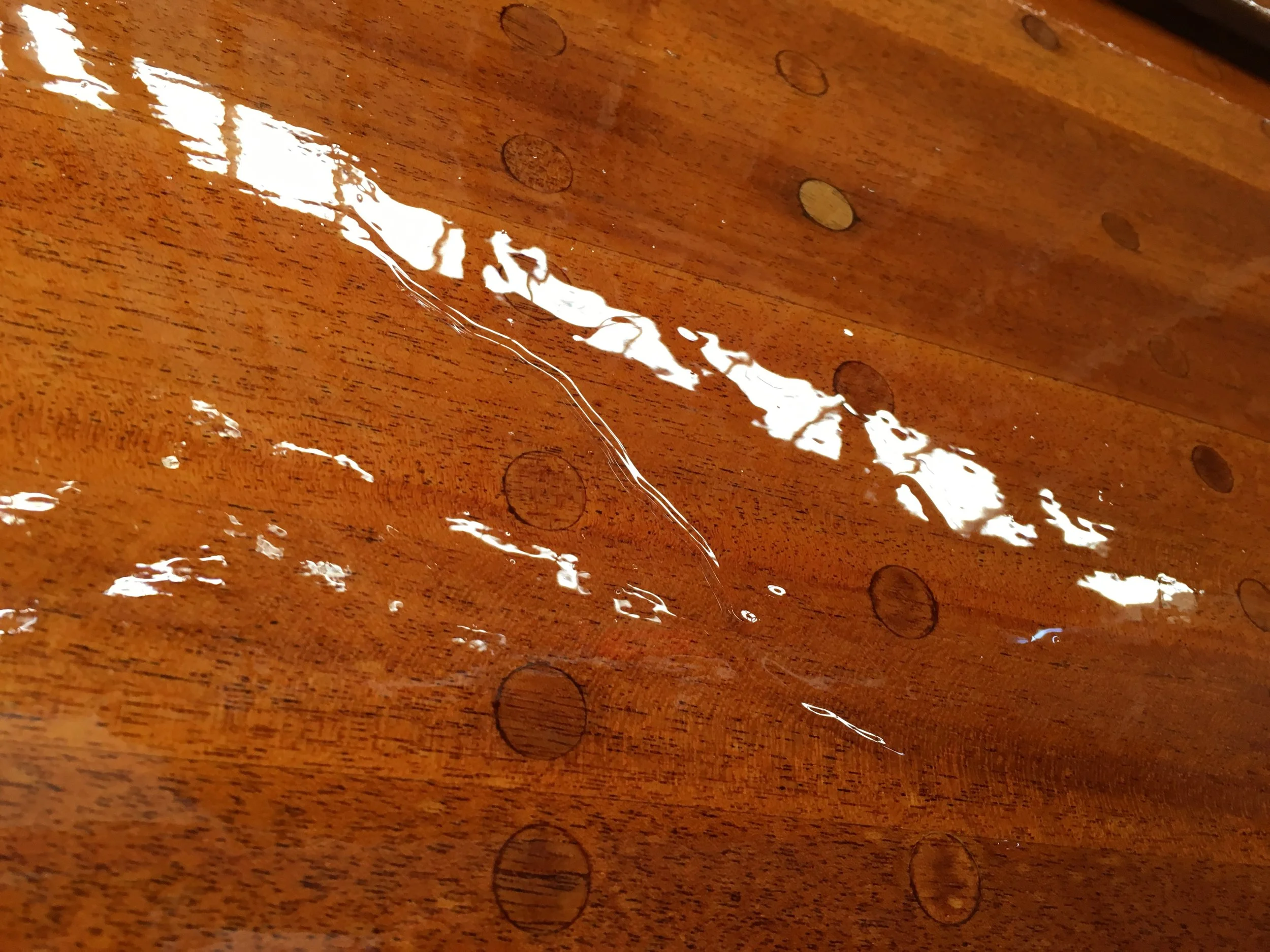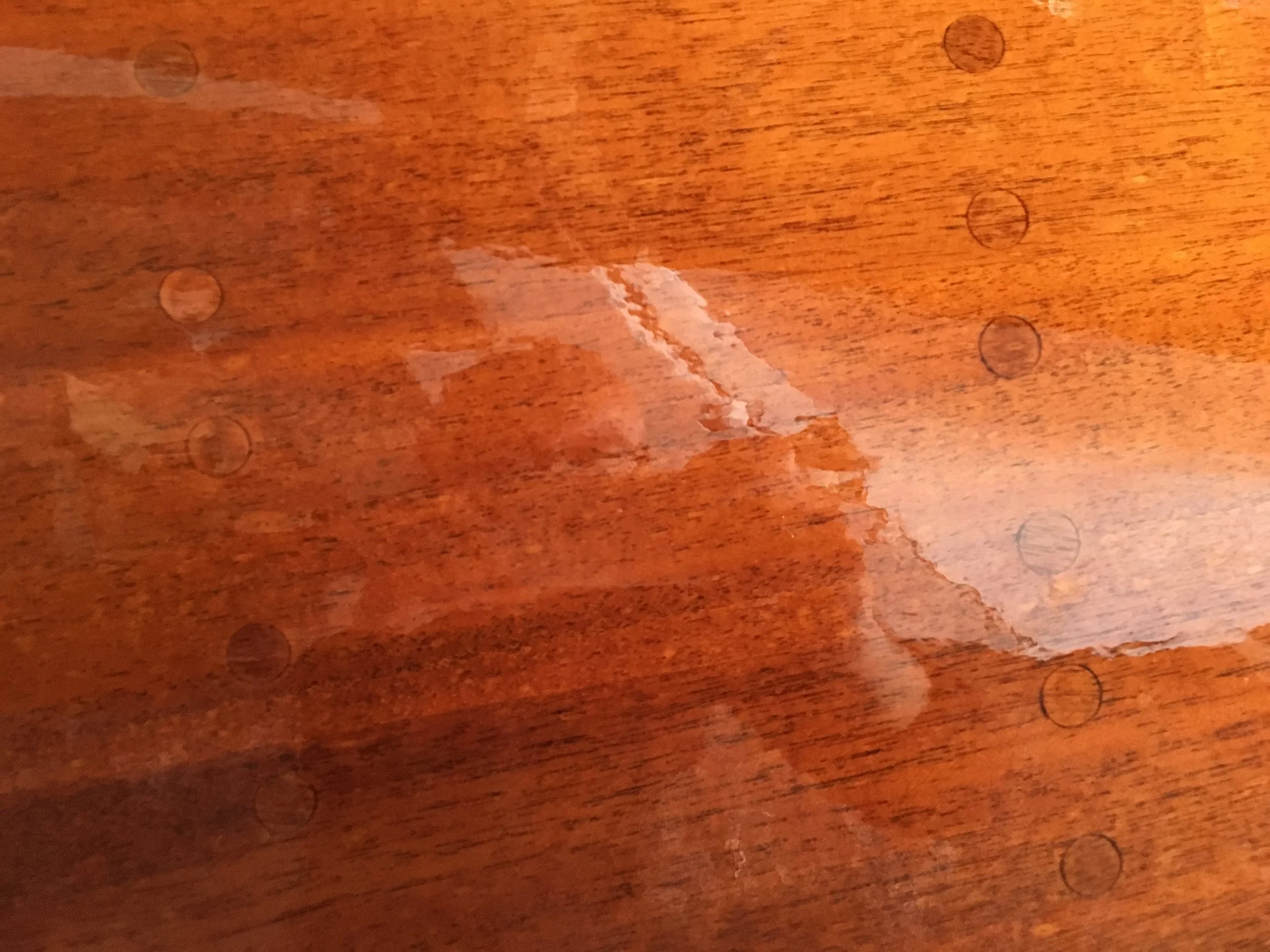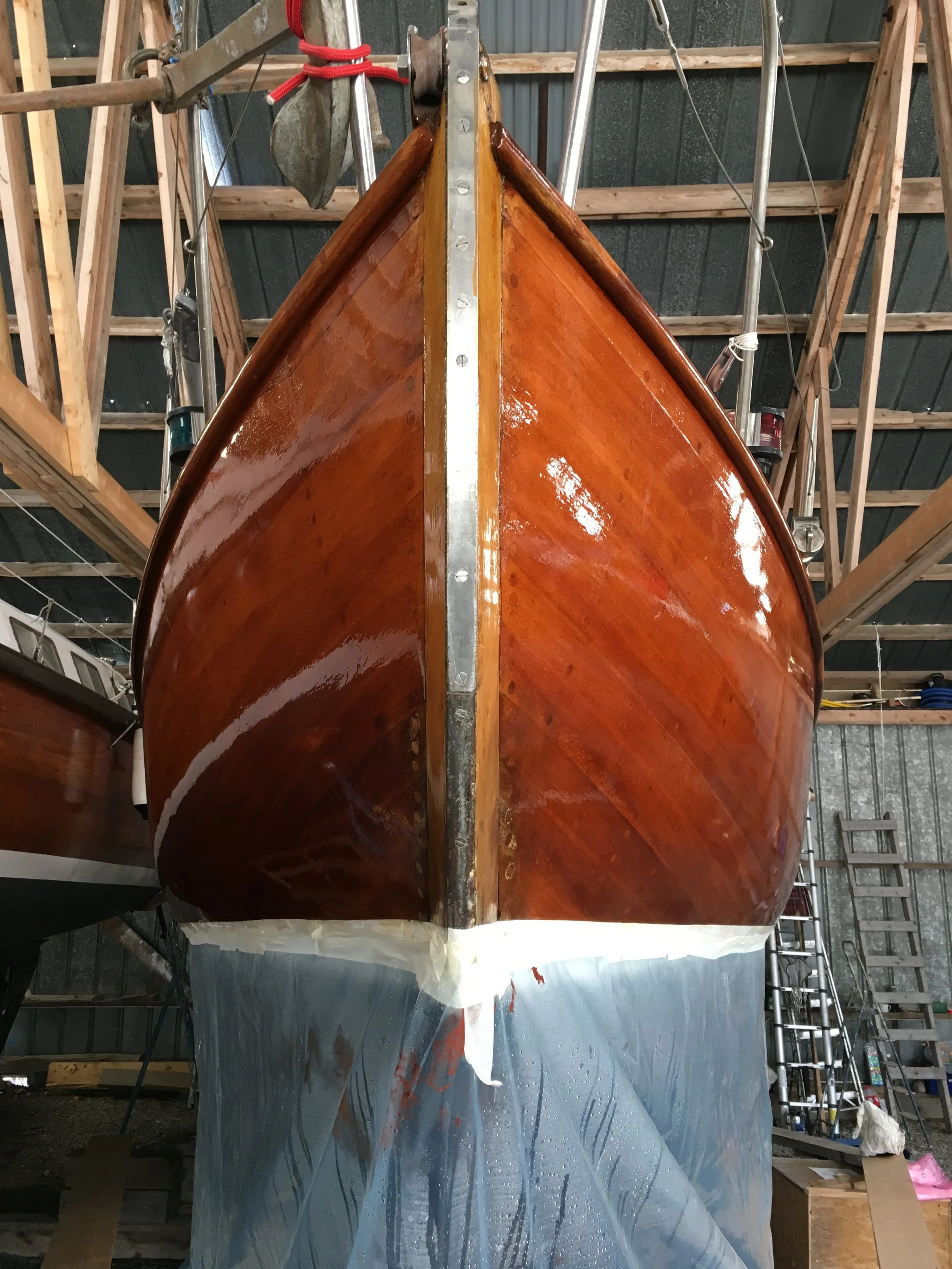Varnish meditation
It’s sunny and almost no wind today - perfect weather for varnishing.
I went to the boatyard early in the morning to prepare Meritaten for varnishing. It is said that the safest time to apply varnish is before noon so that there is enough time to cure the paint before evening humidity settles on everything.
The hull got wiped with a clean rag soaked with Epifanes thinner. I have a bad experience from using turpentine for that - maybe not because of that but I had problems with varnish not curing after cleaning the hull with turpentine. Better safe than sorry so I’ve dedicated to use dedicated thinner this year.
I’ve also changed the way I use varnish. Last year I thinned it by circa 20% to have it flowing better. The can was used in 75% after finishing but the result was not satisfactory - there were many “vacations” in the surface and adjacent layers did not blend with themselves.
This time I decided to use Epifanes without any thinner. Started on bow, port side, and moved towards the aft. Then I came back varnishing whale-deck above. After finishing I looked onto the result and was not impressed - varnish was sagging in few places and few other had “vacations”. But otherwise the layer was nice and thick. I concluded that it was too much varnish and spreading was not consistent.
And then I made the stupidest thing ever - I tried to fill in “vacations” with some strokes of varnish… There is an old rule that you never, EVER, do that. I know this rule but wanted to see what happens. Well, now I know: huge, ugly snoot of sagging varnish surrounded by semi-dry “vacations” of disturbed varnish.
Indeed - NEVER try to correct once-finished varnish. It will just make it worse. Better to correct it with next varnish over fully cured layer. Wet-on-wet does not apply to varnish!
So there will be some work next spring to remove these sags. I’ll remove them with blade, to avoid sanding too deep in adjacent areas.
With that in mind I moved to starboard side, this time paying attention to properly spread the varnish before blending with the wet edge: first striking vertically until I felt that the brush is giving equal response everywhere. Then spreading horizontally from top to bottom of the sector (roughly two frames, easy because there are plugs visible) until again I could feel equal resistance on the brush and the sound of brush was telling that it glides over varnish and not over dry wood. From top to bottom and back to top. Then final blending with quite hard pressure on the brush and extending almost halfway into the wet edge.
After finishing the whole boat I could take a look. The result on starboard is perfect!
I now understand why many people swear for Epifanes traditional varnish - it brings up such a beautiful and deep tone of wood! And with the proper technique it is a pleasure to use!
For next season I note that it took almost one full can of varnish for just a hull and whale-deck.
The boat is now sensitive to any dust so I moved a bit away from her with my next task of making new mainsail track.
Anders agrees with me that she needs to be launched ASAP. He wants to avoid problems similar to these experienced by “Staika” that she does not want to float since a week.
So now we have a launch date: May 1st!
While at varnishing - how to treat our precious brushes after the job is done? There are many methods but I like the most one described once in Wooden Boat Magazine: after the job is done I clean my brushes in turpentine - let them sit there for some minutes, rigorously squeezing the remaining varnish from the core of the brush. After that I simply dope the brush in linseed oil and keep it in closed container.
I had a bad experience with trying to wash the big brush entirely to keep it stored dry. It seemed that I got out all varnish from bristles (turpentine did not change colour on the last bath) so I final-cleaned the brush in soapy water and hanged in plastic bag to dry. To my disappointment the brush became stiff and almost ruined! I rescued it by putting into linseed oil so now it is in good condition again but all this hassle and lots of turpentine used has steered me away.
With current method I just squeeze the oil from bristles, briefly dope the brush in Epifanes’ thinner and I’m ready to go!






